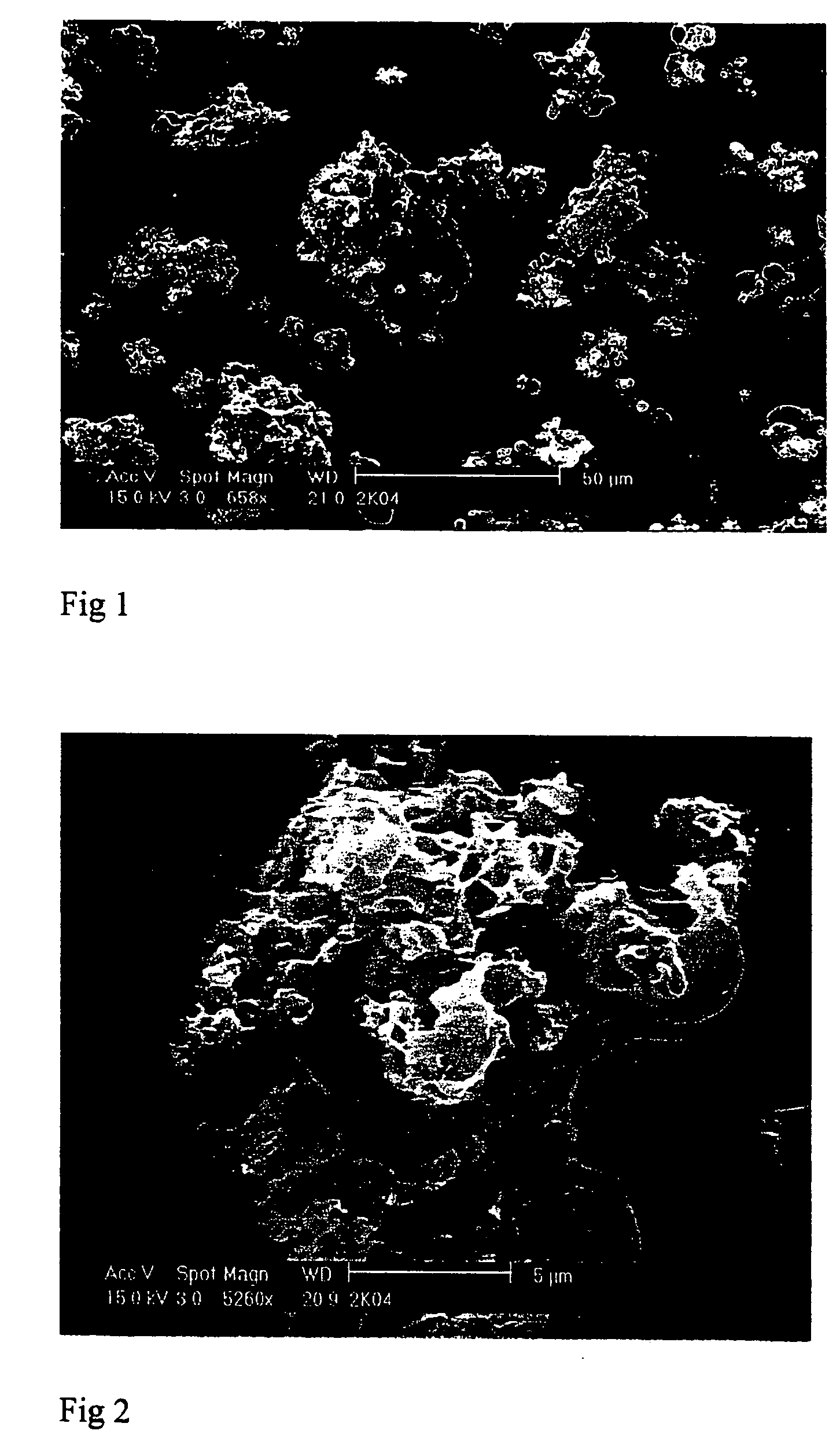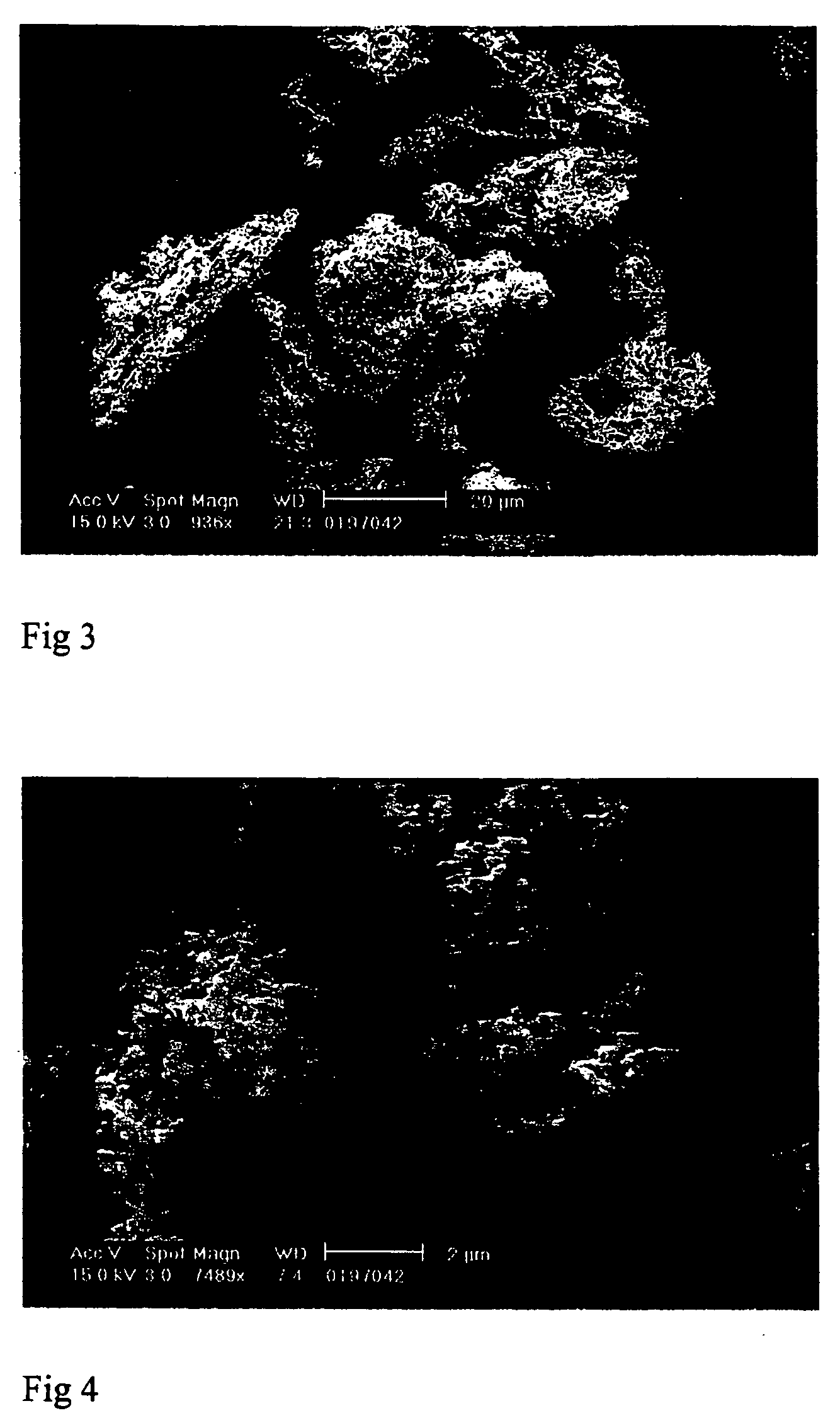Particulate materials
a technology of active substances and particles, applied in the direction of heterocyclic compound active ingredients, anti-inflammatory agents, drug compositions, etc., can solve the problems of affecting the release profile of active substances, affecting the thickness and uniformity of applied coating layers, and increasing the size of overall particles
- Summary
- Abstract
- Description
- Claims
- Application Information
AI Technical Summary
Benefits of technology
Problems solved by technology
Method used
Image
Examples
example 1
[0098] The non-steroidal anti-inflammatory drug diclofenac, in the form of its sodium salt, was coprecipitated with the taste masking polymer ethyl cellulose (EC) (4 cps) to obtain taste-masked formulations. The process used was a Nektar™ SCF particle precipitation of the type used in Examples A of WO-02 / 38127, yielding a product which though effectively taste masked by a surface layer of the EC, nevertheless contained an intimate molecular level mixture of the two components with no physically distinct “core” and “coating” layers.
[0099] The particle formation vessel used had a capacity of 10 litres. The two-passage coaxial nozzle had a 0.9 mm outlet diameter. Supercritical carbon dioxide—the anti-solvent—was introduced through the inner nozzle passage at a flow rate of 50 kg / hour and a solution of the drug and polymer in methanol (6% w / v, drug:polymer weight ratio 1:1) was introduced through the outer passage at a flow rate of 0.8 kg / hour.
[0100] The pressure in the particle forma...
example 2
[0104] Example 1 was repeated but coprecipitating the drug and polymer from tetrahydrofuran, and using a fluid inlet arrangement of the type described in Examples A of WO-03 / 008082 (ie, with separate anti-solvent and solution inlets, and introducing the anti-solvent at a near-sonic, sonic or supersonic velocity).
[0105] The particle formation vessel had a 2 litre capacity. The nozzle had a 0.2 mm diameter outlet and the solution line a 0.125 mm diameter outlet, with a vertical spacing of 4 mm between the two outlets. The operating temperature and pressure (ie, within the particle formation vessel) were 36° C. and 80 bar. The carbon dioxide was pre-heated to 85° C. upstream of the nozzle, and introduced at 200 ml / min. The drug / polymer solution had a concentration of 9% w / v (drug:polymer weight ratio 1:2) and was introduced at a flow rate of 8 ml / min.
[0106] A similar product was obtained to that of Example 1, ie, fine particles comprising amorphous diclofenac with a taste masking lay...
example 3
[0107] Example 1 was repeated but coprecipitating the drug and polymer from a 90:10 v / v mixture of acetone and methanol, using a 2 litre vessel and a nozzle with a 0.4 mm outlet diameter. The operating temperature and pressure were 40° C. and 200 bar. The carbon dioxide was introduced at 200 ml / min and the drug / polymer solution (5% w / v, drug:polymer weight ratio 1:1) at 4 ml / min. Samples of the product are shown in FIGS. 3 and 4; again it consisted of amorphous sub-micron particles aggregated to an overall volume mean diameter of around 27 μm.
[0108] Another potential solvent system for diclofenac / EC would be a mixture of dichloromethane and methanol, for instance 80:20 v / v or more preferably 90:10 v / v.
PUM
| Property | Measurement | Unit |
|---|---|---|
| volume mean particle diameter | aaaaa | aaaaa |
| volume mean diameter | aaaaa | aaaaa |
| volume mean diameter | aaaaa | aaaaa |
Abstract
Description
Claims
Application Information
 Login to View More
Login to View More - R&D
- Intellectual Property
- Life Sciences
- Materials
- Tech Scout
- Unparalleled Data Quality
- Higher Quality Content
- 60% Fewer Hallucinations
Browse by: Latest US Patents, China's latest patents, Technical Efficacy Thesaurus, Application Domain, Technology Topic, Popular Technical Reports.
© 2025 PatSnap. All rights reserved.Legal|Privacy policy|Modern Slavery Act Transparency Statement|Sitemap|About US| Contact US: help@patsnap.com



